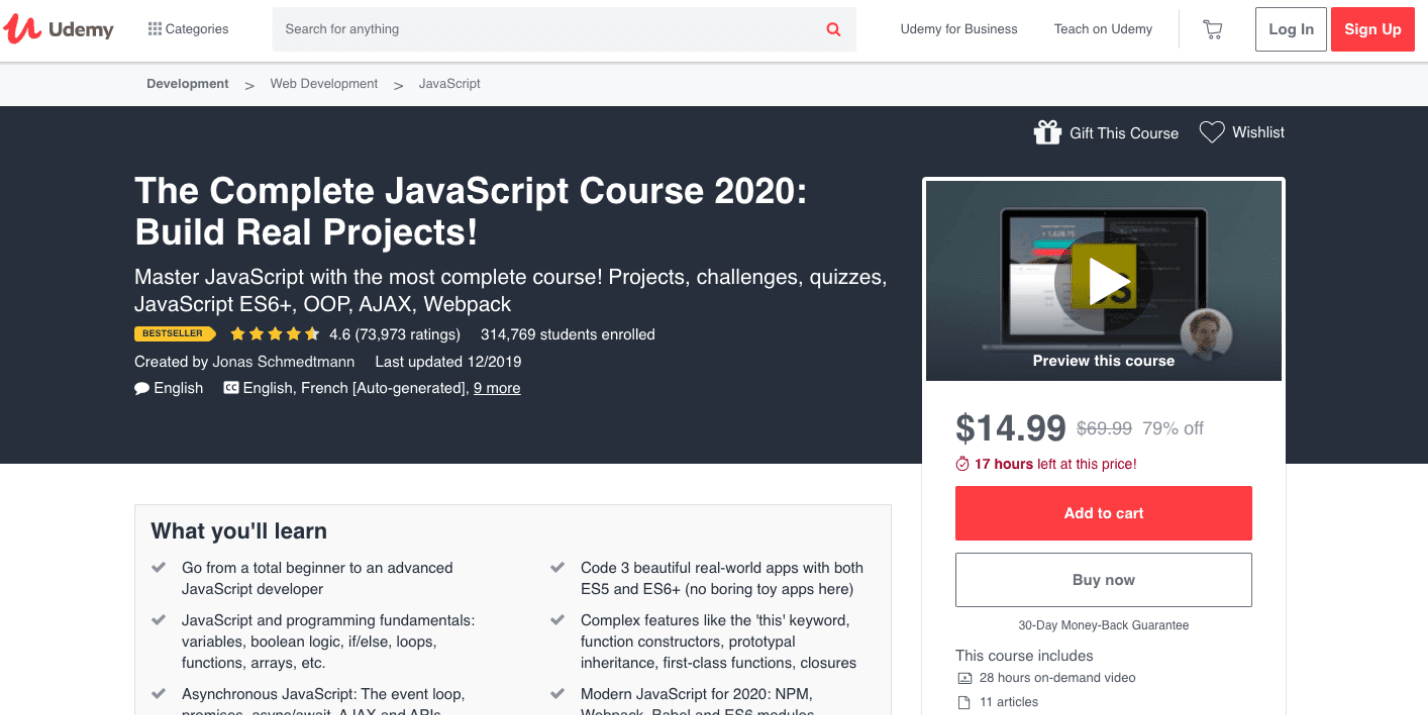

- #Javascript you dont know js job ready how to
- #Javascript you dont know js job ready code
- #Javascript you dont know js job ready series
There are numerous ways that Kotlin/JS can be used. The current implementation of Kotlin/JS targets ES5. I wouldn’t recommend being a jack of all trades, because being mediocre would work well against you. Kotlin/JS provides the ability to transpile your Kotlin code, the Kotlin standard library, and any compatible dependencies to JavaScript. Being flexible with the skills you are willing to acquire when starting out will play out to be a key asset in your job search as a junior web developer with no experience. By learning the basic building blocks of programming, as well as JavaScript’s core mechanisms, you’ll be prepared to dive into the other, more in-depth books in the series-and be well on your way toward true JavaScript. You are too much in love with your stack. The series’ first book, Up & Going, provides the necessary background for those of you with limited programming experience. While JavaScript frameworks may help you get the job done quicker, there’s only so far you can go if you don’t understand the core concepts behind these frameworks. Look up whatever syntax you don’t know, try to get the basic data structures down.
#Javascript you dont know js job ready how to
With the "You Don’t Know JS" book series, you’ll get a more complete understanding of JavaScript, including trickier parts of the language that many experienced JavaScript programmers simply avoid. If you’re good with DS/Algos and just need syntax, go on leetcode, pick problems you know how to solve, and implement them in JS. I emphasize the word journey because knowing JS is not a destination, it's a direction.

#Javascript you dont know js job ready code
It gets easier and more interesting to understand and code when we approach the concept of nested scopes by looking at them from the point of view of RHS and LHS.Ĭonsider: function foo(a) var baz = foo() // now baz has the same function definition as bar but it can acess bar's lexical scope baz() // guess what the output is, yes it's the same as above: 2Ĭlosure is when a function is able to remember and access its lexical scope - even when that function is executing outside its lexical scope.It’s easy to learn parts of JavaScript, but much harder to learn it completely-or even sufficiently-whether you’re new to the language or have used it for years. That's the whole point of this book seriesBut here's where you start that journey of getting to know the language a little better. This placement is what tells the JavaScript engine where it should perform its LHS and RHS lookups - in other words, the chain of scopes it needs to move up through to find a variable. (This is a nice way of thinking about scope!) It all comes down to where the author chooses to place his/her variables and functions (and blocks). Lexical scope is a scope that is defined by the JavaScript author at the time of writing the code.

So whenever you see a ReferenceError in the console, you can be sure it relates to a scope failure. If the variable can’t be found in the scope chain for an RHS lookup, a ReferenceError will be thrown. So to get the most out of Get Started, make sure you spend plenty of time writing JS code to build up your experience.
#Javascript you dont know js job ready series
If the variable can’t be found in the scope chain for an LHS lookup, a global variable will automatically be created (when in nonstrict mode), or a ReferenceError will be thrown (when in strict mode). This book's main job is to get you ready for studying JS deeply throughout the rest of the series it's written assuming you already have familiarity with JS over at least several months experience before moving on in YDKJSY. Firstly, whoever wherever you are working, or whatever you have been tried in JavaScript that doesn't mean you are 100 expert in it. By contrast, in a = 2, the reference to a is an LHS reference because we don’t actually care what the current value is - we simply want to find the variable as a target for the =2 assignment operation. Answer: Well, the question has not specific answer but we can define it. Instead, we’re looking up to retrieve the value of a so the value can be passed to console.log(…). The reference to a is an RHS reference because nothing is being assigned to a here. The RHS lookup is done when a variable is on the right-hand side of an assignment operation, as in console.log(a). 2 Into Programming 1.2.3 Into JavaScript 1.2.4 Into YDKJS 1.2.5 Acknowledgments 1.2.6 Scope & Closures 1.3 Foreword 1.3.1 Preface 1.3.2 What is Scope. The LHS lookup is done when a variable appears on the left-hand side of the assignment operation, as in the var a = 2 example, where the LHS lookup is trying to find the variable container itself so it can assign. But the question is: to the side of what? To the side o f an assignment operation. Here the author introduces the concept of left-hand side (LHS) and right-hand side (RHS) lookups.


 0 kommentar(er)
0 kommentar(er)
